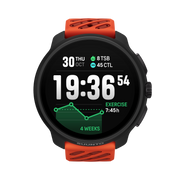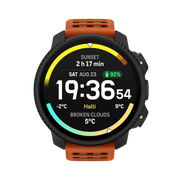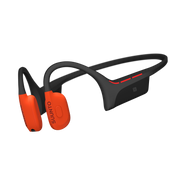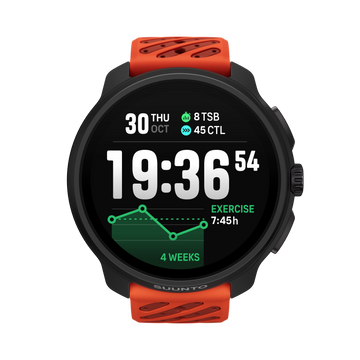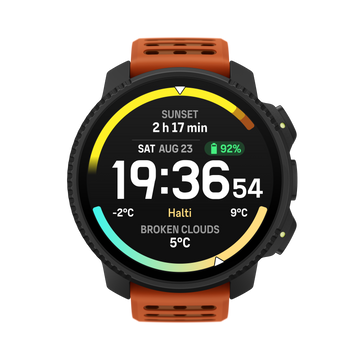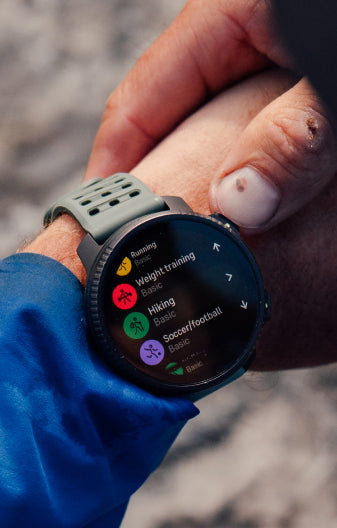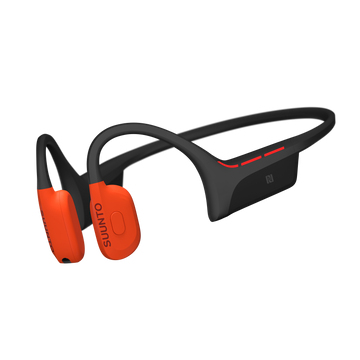

Suunto Blog
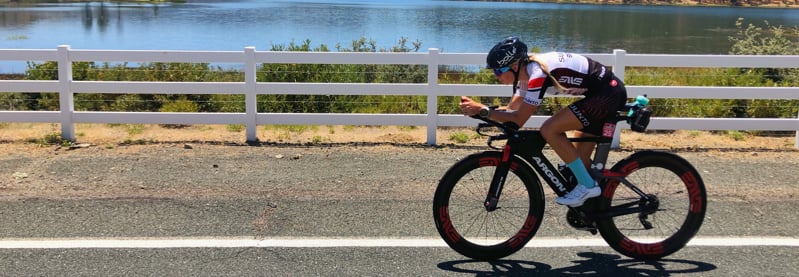
One triathlete’s journey through hell and back to the Kona start line
In 2014, a truck smashed into American triathlete Kelsey Withrow throwing her life to go into a tailspin. She endured bravely and will be on the Kona startline this year.
Doctors told her she would never run or race again. Kelsey, then 31, was lying in a hospital bed, her body battered and bruised after a truck hit her, and her vision for her life in ruins. She decided to prove the doctors wrong.
After recovering from the accident Kelsey drove herself hard. She refused to give up. While the determination was admirable, she now admits it bordered on reckless.
“I spent the next year trying to come back, but was plagued with more injuries and frustration,” Kelsey explains. “I gained a lot of weight and fell into a depression where I coped by going out at night, drinking way too much, and just not really living life as a pro athlete.”
Kelsey began swimming competitively when she was six years old. Later at college, she competed in Division 1 before moving to the Olympic Training Center in Colorado Springs as a member of the USA Triathlon National Team. She completed her first triathlon as a senior high school student in 2001, and was hooked.
With her life in tailspin after the accident, Kelsey got close to quitting triathlon. But then she met Mike, her now coach and boyfriend, who helped her turn everything around.
“The new path I chose to go down was life changing, but not easy,” she says. “Mike got me healthy for the first time years. But when I did decide to start racing again, I was in for a rude awakening. I moved up from ITU (International Triathlon Union races) to the 70.3 distance and finished dead last in most of those races.”
She was going in the right direction. But some old bad habits were holding her back. Eventually Mike gave her an ultimatum: get a job and make triathlon a hobby or commit 100% and make triathlon her job. “It took a good week for me to decide to go ‘all in’, but when I did, everything switched for me,” she says.
The decision empowered her; in 2017 she won her first Ironman 70.3 at Victoria, then backed that up with a win at Ironman 70.3 Manta the following weekend. She has been on the podium at almost every race since, securing her first Kona slot this year at age 36.
“This just goes to show you that if you work really hard and don’t give up, amazing things can happen!” she says.
Kelsey takes over our our Instagram stories this weekend. Follow along as she prepares for Kona!
READ ALSO
How (not) to qualify for Kona
Road to Kona: Cody Beals' clear race strategy
Road to Kona: 5 tips to train effectively as a couple
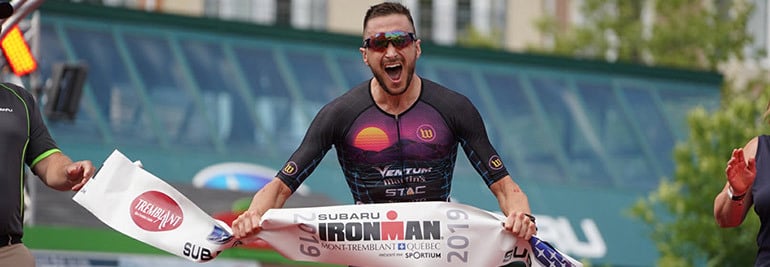
Road to Kona: Cody Beals' clear race strategy
"Many athletes seem to make impulsive decisions, sometimes abandoning carefully crafted race plans,” says pro triathlete Cody Beals as he prepares for the IRONMAN World Championships in Kona.
Cody Beals didn’t fully commit himself to the sport of triathlon until after he completed his degree in Physics, but he was never a stranger to endurance sports. “My parents introduced me to endurance sports almost as soon as I could walk. I got my first taste of competition as a swimmer and later picked up cycling and running as a teenager.”
“Endurance sports, like my academics, rewarded consistent, deliberate practice even more than natural ability.”
Three full-distance pro Ironman races and three wins! (Image ©Kevin Mackinnon)
From his first local “Try-a-Tri” in 2006 Cody Beals steadily produced promising results. He fully committed himself to the sport in 2012 and in 2014 took his elite card making this his sixth season as a professional triathlete. Currently Cody has won three out of three of his full-distance IRONMAN races, recently winning IRONMAN Mont Tremblant in August for the second time.
Heading into his first appearance at IRONMAN World Championships in Kona, Cody is confident in his preparation. After defending his title at IRONMAN Mont Tremblant, he plans to continue the same preparation of prioritizing sleep, taking recovery days, and training efficiently with an emphasis on quality over quantity.
However, he is not going into the race naively believing it will be like any other race. “The one thing that I don’t have a good grasp on are the dynamics of a World Championship race. World class athletes, who are otherwise disciplined and rational racers, will behave erratically on the Queen K. Many athletes seem to make impulsive decisions, sometimes abandoning carefully crafted race plans in favor of gambling for the podium. The race plays out in a manner unlike any other. It’s the race dynamics, not the place, that intrigue and mystify me the most.”
Although he is aware of the athletes who will also be racing at Kona, Cody makes an effort to not follow his competition. This allows him to stay focused on his own process and not second-guess his decisions.
Cody on his way to a win at Ironman Mont Tremblant in August. (Image © Talbot Cox)
Cody’s average day of training can take all day. From a late morning swim, to an afternoon run, ending the day with an evening ride. When you add in recovery time, and some desk work and that’s a full day! But he explains his training regimen should not be the standard for those looking to try a triathlon. First timers looking to get into triathlons shouldn’t be intimidated or overwhelmed by the more experienced athletes. The triathlon community is inclusive and welcoming. At the end of the day, Cody says, that “the experience of an absolute beginner and a veteran pro out on the race course have far more in common than different.”
Last but not least it seems that Cody’s secret weapon is his tortoiseshell cat. He says that adopting her from the Humane Society has been nothing short of life changing and he regrets not doing it sooner. “She doesn't care how my last race or training session went. She's just there to give me unconditional affection and make me laugh every day. I'm convinced that cat cuddles are my not-so-secret weapon for recovery!”
READ ALSO:
Road to Kona: 5 tips to train effectively as a couple
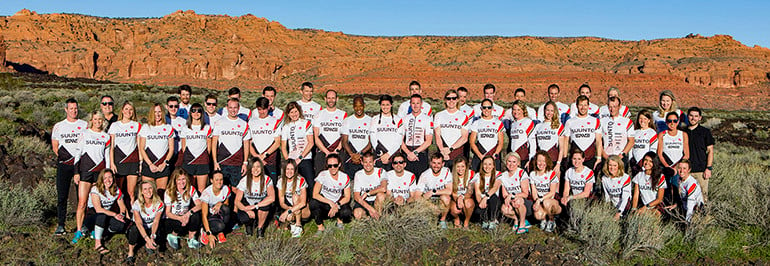
Suunto Multisport Team season kick-off in St George
We brought triathletes, ultrarunners, off-road triathletes, and marathon runners to Southern Utah to launch our North American multisport team.
Last weekend 50 athletes from the Suunto Multisport Team descended on the trails of St. George, Utah, to kick off the team’s inaugural 2019 season. The Suunto Multisport Camp spanned three days, offering an opportunity for professional and amateur triathletes and runners to meet, participate in workshops and familiarize themselves with team product during group runs, rides and swims.
“The Suunto Multisport Camp served as the perfect venue for us to gather with teammates, team management, and sponsors to celebrate the start of what we hope will be an immensely successful 2019 season. While every member of this team is focused on performance and competition, this roster of athletes comprises a unique collection of elite and amateur athletes who all have compelling stories to tell,” says Caleb Whittle, head of brand marketing for Suunto in the Americas.
One of those stories came from Brian Boyle. After surviving an automobile accident that pulverized his bones and organs, stripped him of over 60 percent of his blood, stopped his heart eight times and left him in a coma for two months, Boyle powered through years of rehabilitation and has now finished seven IRONMAN 70.3s, seventeen marathons and two 100-mile ultramarathons, all while advocating for the American Red Cross.
“Getting to meet so many incredible athletes at the camp that share the same enthusiasm for the sport was amazing. It was very rewarding to learn about their backgrounds and experiences, train alongside them and to be able to learn from their training and racing recommendations. After returning from camp, I'm very motivated to go into my next race, represent the team and to follow my teammates throughout the year as they participate in their events,” Brian says.
Watch the video below to get a taste of what it was like in St. George!
Every member of the Suunto Multisport Team will be using the Suunto 9—our latest multisport GPS watch equipped with a 120-hour battery life, wrist-based heart rate and 80 sport modes. Additional sponsors who equipped the team included Enve Composites, Jaybird, Castelli, Blueseventy, BOCO Gear, Kanberra Sport, Petzl, Nuun, and Hyperice.
Suunto Multisport Team Roster 2019
Barbara Peterson
Brandi Swicegood
Caroline Coble
Chris Johnson
Dave Orlowski
Deanna Newman
Derk de Korver
DJ Snyder
Eliot Scymanski
Ellen Hart
Elyse Gallegos
Emily Rollins
Felicity Joyce
Jacqui Giuliano
James Burke
James Hotson
Jeff Mutchie
Josiah Middaugh
Karsten Madsen
Katie Schick
Katie Thomas Morales
Kelly Lambert
Kelsey Withrow
Kinsey Laine
Lisa Roberts
Matt Davidson
Molly Smith
Ralph Nurse
Roger Thompson
Ryan Giuliano
Sam Long
Samantha Mazer
Samantha Snukis
Sarah Barber
Shannon Coates
Susanne Davis
Tim Hola
Timothy Winslow
Trista Francis
Adam Olson
Alex Borsuk
Allan Spangler
Beth Risdon
Brian Boyle
David Fuentes
Denise Sauriol
Jonnah Perkins
Jordan Grande
Justin Cogley
Kelly Young
Liz Canty
Nora Bird
Robert Steffens
Ryan Montgomery
Sawna Guadarrama
Tara Warren

The data rules! A pro triathlete’s data driven training approach
Canadian triathlete Cody Beals uses his skills as a data analyst to collect, study and optimise his training. Given his recent results, the approach is paying off.
When Cody Beals became a triathlete cycling was his weakest discipline. At high school, he was a District All Star in cross country, and a good swimmer. But cycling wasn’t his thing.
The reverse is now true – cycling is his strongest discipline. And it was a data driven approach to his training that made the difference.
For proof, the 28-year-old from Guelph, Ontario won two full distance Ironmans, the first and second of his career. At his first, Ironman Mont Tremblant, he set the bike course and overall course records.
“I undertook a deliberate process of figuring out how to get my cycling up to a world class level,” Beals says. “The biggest thing was getting a power meter – it was a huge revelation! I was wasting so much time on the bike just soft pedalling. With a power meter I learned to make every minute of my riding count.”
© Welle Media
Beals has always been a data freak. He was top of his class at high school, and top of a prestigious physics programme while at university. Back then, he began capturing and analyzing data almost obsessively.
“I made my own monster spreadsheet to track every single last aspect of my life,” he says. “My sleep, my mood, my training – everything. That was when I was a self coached athlete. Even though I was making mistakes, a data approach was always something I believed in.”
After university, Beals has worked in statistics and data analysis, and is using his mastery of these skills to optimise his training. His coach, David Tilbury-Davis, shares a data based training philosophy, and the two work together on that basis. All Beals’s swim, bike and run training is measured and monitored. “The data tells the most compelling story,” he says.
Data analysis has also helped Beals in other ways. Having a Suunto 9 to capture his training runs shows Beals what’s really going on with this runs, not just what he thinks – two very different things. Perceived exertion doesn’t necessarily equate to good performance.
“I've learned through data that how you feel about something sometimes bares no relation to how you're actually performing,” Beals explains. “How I'm feeling is another data point, but it's not the most important. In the absence of power, pace or heart rate data you're just left guessing. The coach can provide part of the reality check, the rest of the reality check comes from these devices and the data they collect.”
© Welle Media
While how he feels about a workout isn’t the most important factor, conversely it is a potentially telling data point. Feeling over the moon isn’t necessarily a good sign, while feeling average isn’t always a bad one.
“I like that the Suunto 9 will prompt you for how you're feeling after each workout, he says. “That's something I have started monitoring more closely. What I've learned is that in a lot of my best training blocks, with almost every single workout, I will feel very medium.
“People assume if you're crushing it leading up to an Ironman, you're feeling great about every session, or maybe some people would assume you are so tired and fatigued that every session is brutally hard.
“The reality is that when I'm putting in my best training blocks, I'm just very stable. Everyday is pretty unremarkable. I'm not putting up epic training sessions. My mood isn't swinging around wildly. It's just day in day out consistency.”
This and other insights help Beals and his coach from avoiding overtraining syndrome, which Beals says is too often a badge of honour in the world of triathalon.
“It's kind of celebrated when athletes can push themselves to extreme lengths in training, but I will tell you that any moron can overtrain themselves,” Beals says. “The hard part is the deliberate, methodical application of training load and on the flip side recovery to reach your true potential.”
Lead image: © Ventum
READ MORE:
SLAYING HIS DEMONS: A PRO TRIATHLETE’S JOURNEY TO FINDING BALANCE

Fuelling the engine: a commonsense approach to nutrition
With so many contested views, what we should and shouldn’t eat has become a touchy, and often confusing subject. In this third instalment of our series on nutrition, we offer a simple approach for athletes that cuts through all the noise.
Eating well is essential for athletes. The bigger your goal, the more nutrition has to play a central part of your training plan. Take shortcuts on how you eat, and you’ll eventually pay for it.
But the topic of diet, what we should and shouldn’t eat, has become touchy and confusing. There are all sorts of diets out there – paleolithic, vegan, gluten-free, low carb, high carb – each one with advocates claiming their way is the one true way.
Matias Anthoni prefers a common sense approach to nutrition.
“Nowadays it’s become a big topic, and everyone has his or her own opinion, and it seems hard to find the real truth,” says Matias Anthoni, Suunto’s in-house personal trainer. “It’s become trendy to follow a kind of diet.”
Anthoni, 26, has a Bachelor in Sports and Health Promotion, and gives nutritional advice to Suunto employees, as well as personal fitness training. He takes a simple, “nonsectarian” approach to nutrition, rather than buying into the hype of one diet over another.
“As long as you get the nutrients it doesn’t really matter what diet you follow,” he says. “You can teach your body to thrive on different diets. The body is quite adaptable. But we do need certain basics. The question I always ask is, would my grandma recognize it as food?”
Here are Anthoni’s five down-to-earth tips for good nutrition:
1. Start with your meal rhythm
This is the first topic Anthoni’s raises with his clients during a consultation. Just improving how often you eat can improve what you eat. Many of his clients skip meals or have long breaks between meals; this results in blood sugar levels dropping, then tiredness, and then cravings and impulses for unhealthy snacks.“With a more steady meal rhythm you avoid big spikes in the blood levels, make better decisions, and are less likely to just reach for a chocolate bar,” he says.
Meals should be about three hours apart, and consist of a good breakfast, lunch and dinner, with smaller, healthy snacks in between. “It leads to healthier choices and you’ll have more energy,” Anthoni says.
2. Plan ahead
“You can’t be a top athlete if you are eating poorly; it’s not just about training, it’s about eating as well,” Anthoni says. “It really helps if you plan your meals like you plan your training. Know what you are going to buy and know what you are going to make. When you come home from work, or after a training session, it’s all ready to go.”
3. Follow the Nordic plate model
Anthoni says in Finland there’s a traditional “plate model” or a way to divide your plate into three sections: one half should be salad and vegetables, one quarter should be carbohydrates, and one quarter protein. This balanced plate ensures you will get enough of all the key nutrients.
4. Eat quality food
Quality can seem like a vague notion, so Anthoni recommends a common sense approach here, too. “Have a look at your plate – are there all the colours – red, green, yellow?” he asks. “Are you eating the same thing every day?” Anthoni suggests finding and following basic nutrition guidelines. “They provide a good start, and then make small changes to fit yourself from there,” he says.
5. There’s no one size fits all diet
Deciding what to eat depends on your goals. “The more you move the more you need,” Anthoni says. “If your goal is building muscle mass, then you need more protein. If you are an endurance athlete, eating enough carbohydrates becomes more important. There is no one size fits all, no one plan can fit everyone. You need to have your own plan.”
Lead image: Photo by Roosa Kulju on Unsplash.
READ MORE
Fuelling the engine: talking nutrition with ultra runner Lucy Bartholomew
Fuelling the engine: talking nutrition with triathlete Mel Hauschildt
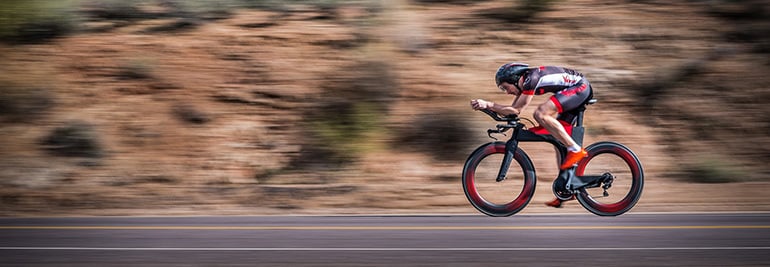
Slaying his demons: A pro triathlete’s journey to finding balance
Canadian triathlete Cody Beals recently won two full distance Ironman races, the first and second of his career. Is he gunning for more? You bet. But only in his own sweet time.
Right now 28-year-old Cody Beals is doing the thing he finds hardest in the world: nothing. The Canadian triathlete, from Guelph, Ontario, is chilling at the seaside on vacation, recovering from his best season ever as a pro.
In August, he came to the startline of Ironman Mont Tremblant, his first ever full distance race. He won it in style, setting the bike and overall course records in the process. Then six weeks later, he competed at Ironman Chattanooga, and won that too. He has won three 70.3 Ironman races this year.
Fans and followers have been pressuring Beals to strike while the iron is hot and smash another full distance Ironman this fall. Once upon a time, he might try just that. But he knows better now and says he is in no rush.
“I’m not going to get greedy,” he says. “It's been a great season, I've won five races. It's time for a good break right now. The reality is I'm still barely sleeping five hours a night, I'm still jittery and strung out, so it's time to call it a season. Doing those two races in six weeks really beats you up.”
© Bliiq
Beals is big believer in having balance and self kindness, both things he had to learn the hard way. Back in his university days he had neither.
When he graduated high school in 2008, he was top of his class and a District All Star in cross country. He began university with high aspirations. And, problematically, the impossibly high standards of a perfectionist.
He was top of his class in physics at Queen’s University, yet he isn’t proud of his academic performance because of the toll it took on him.
“I studied with a totally compulsive mentality,” Beals says. “It wasn't a worthy trade off because I had no balance. I was a hermit that trained and studied. I was beating up on myself.”
He also stopped dating, no longer able to feign interest in women, but not yet ready to accept his sexual orientation as a gay man. His social life disappeared and he sought the cold comfort of isolation. Anxiety began creeping into his body and mind, then disordered eating habits, low testosterone and insomnia all ensued. His response to this? Study and train even harder.
“I abused training as a way to self medicate,” he says. “And that led to overtraining because, like any drug, there is a dose-response effect; a little bit of training relaxes you, but too much is toxic.”
© Cody Beals
He battled on like this throughout his four years at university. After graduation, totally exhausted and frail, he realised something had to change.
While still at university, Beals decided to makel his life as an athlete transparent. He shared training data on his blog, wrote about his struggles, failures, ambitions and systems. He made his life naked for the public to see. His story caught the attention of someone who would prove to be a crucial figure in helping him transform his life.
“Realising I'd been a complete moron, I stopped self coaching, and hired a world class coach, ” Beals says. It wasn't really a decision I made; David Tilbury-Davis, a British coach, had to court me aggressively to convince me that he could help. With some trepidation I gave him the reins.”
It was one of the best decisions he’s ever made. With Tilbury-Davis’s counsel, he began finding balance. He overcame his eating disorder, regained good sleep habits, and stopped overtraining. More recently he came out as gay, something he says is not easy as an elite athlete.
© Craig Taylor
Now, with his life in balance, Beals ticks in a different way. Rather than being obsessed with results, chasing an illusory image of perfection, he revels in the process itself.
“Now what I love about this sport and the lifestyle of being a pro is my day in day out process,” he says. “I'm obsessed with finding enjoyment on a daily basis, and not hanging all my hope on some hypothetical accomplishment in the future, like the world champs or something.”
This is why he’s going to take his own sweet time in entering full distance Ironmans in the future. While he enjoys the training and tactical nature of 70.3 races more, Beals says he will build the rest of his career around full distance races. Just with a lot of respect for the sport and while keeping a balance.
“I'm going to make all my Ironmans ‘A’ races. If I show up on an Ironman startline it's because I'm trying to win. It will just be a couple a year, and I'll be doing a lot of 70.3 racing.”
Lead image: © Ventum
